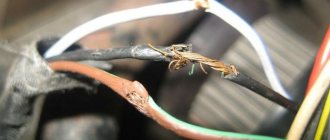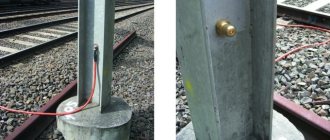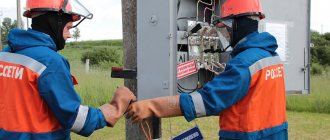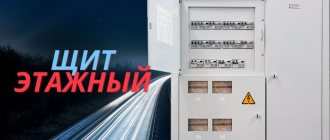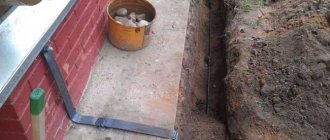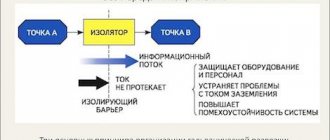One of the most common causes of fires is a short circuit in the electrical circuit. It can occur due to the fact that a faulty electrical appliance is connected to the network, or the insulation of the wire is broken, which leads to the connection of two conductors and a sharp increase in their temperature and subsequent fire. In addition, a short circuit often produces sparks that can ignite nearby flammable materials. This situation can be completely avoided by observing fire safety requirements for electrical installations.
Fire safety rules
What is electrical safety in labor protection
Occupational safety in electrical safety is a separate section of the rules and regulations when working with electrical installations. This activity is most often carried out by electricians, electricians and other specialists in professions directly related to electricity.
Illustration of the use of special measures for safe work on electrical installations
Electricity is dangerous not only due to its damaging effects, but also as a factor in disrupting the production process, causing equipment failure and the risk of fire. Ensuring safe operating conditions in such installations is an integral and important component of the work of an occupational safety specialist and the entire management of the organization as a whole. Federal legislation strictly regulates the procedure for carrying out such work, the timing of training activities, categories and ranks for gaining access to high-risk installations and other aspects. Therefore, compliance with such rules not only ensures compliance with the law, but also significantly reduces the likelihood of negative consequences.
In general, occupational safety and electrical safety is a set of measures that must be carried out on an ongoing basis at the enterprise and are subject to strict supervision and control by government agencies. These measures help ensure safety and continuity of production. Also, special services responsible for compliance with labor safety standards are involved in the regulatory consolidation of this regime at the facility.
Important! Also, if, during an inspection, state supervisory authorities discover non-compliance with legal requirements, various violations and emergency situations, the responsible persons bear administrative, criminal and civil liability for such violations.
Basic requirements and rules for observing safety activities in electrical installations
Legal regulation
Safety requirements when working with power tools
The state pays considerable attention to fire safety issues during the operation of electrical installations. In order to prevent emergency situations, special technical regulations have been adopted, which set out a number of requirements for electrical devices and their operation in order to reduce the likelihood of fires:
- Electrical appliances located in premises must comply with the fire hazard class of such premises;
- If the building is constantly occupied by people, it must be equipped with an automatic fire extinguishing system with a backup power source, since the main electrical network may fail during a fire;
- Doors, elements of the fire extinguishing system, elevators, stairs and other objects through which people can evacuate must be in good working order and be able to function during a fire for a time that is sufficient to complete the evacuation process;
- Transformer cables and wires to provide a fire extinguishing system must be laid in fire-resistant channels and have insulation that is resistant to combustion and has a low level of smoke generation;
- The power supply system must be equipped with a special panel containing devices for its emergency shutdown in the event of a sharp increase in voltage, temperature, and so on. The shield itself must be fire-resistant and made of such material that in the event of a fire the flame cannot spread to nearby objects.
Technical regulations for fire safety
Electrical safety requirements
Labor protection and fire safety at the enterprise
The legislation imposes strict requirements on the employer when carrying out work at production facilities with electrical equipment. Depending on the specifics of the workers’ activities and the entire organization as a whole, such requirements may differ both in the availability of protective and insulating equipment and in the specifics of the work area. The employer is responsible for strictly complying with these requirements in his work, as well as timely and complete provision of technical personnel with all necessary equipment.
Also, responsible occupational safety specialists must conduct training and certification on an ongoing basis regarding knowledge of the basics and rules for using equipment at work. Based on the results of the certification, a decision must be made on the suitability of the position held, confirmation of the category and rank of the employee.
Basics of electrical safety at home and in the workplace
When servicing electrical installations
During scheduled maintenance of live electrical installations, the entire range of safety measures must be observed. Before starting work, personnel must be given targeted training to ensure they know the basics of safety precautions. In this case, each worker is required to mark the completion of this procedure.
After this, it is necessary to provide personnel with special protective equipment depending on the current strength, type and voltage of the production installation. For receiving special funds, the staff also signs in a special journal. When carrying out repair work, it is necessary to de-energize power lines and systems under high voltage and strictly follow safety regulations. In addition, only employees with a certain electrical safety category are allowed to perform such work.
Working with stress relief
If an emergency situation occurs, a man-made disaster or repair of equipment that is under high voltage, this voltage must be removed to minimize the consequences of electric shock on the health of personnel. For this purpose, special means are also used in the form of grounding conductors, voltage meters and clamps. Personnel must use both personal protective equipment in the form of special rubberized clothing and fire extinguishing equipment in case of a facility fire.
Note! Before carrying out such work, training is also provided to the head of the department or the person responsible for compliance with labor safety standards.
Difficult conditions
When carrying out work in harsh climatic or dangerous conditions, the specifics of the circumstances that arise are taken into account. Instruction on the occurrence of factors dangerous to life and health, strengthening of personal protective equipment with special tools, as well as constant monitoring and supervision by the management of the enterprise over the work being carried out are required.
Difficult conditions require special control on the part of responsible persons in conjunction with additional equipment for enterprise personnel. Only employees with high categories of clearance for activities with electrical installations are allowed to perform such types of work, since the likelihood of electric shock increases proportionally to the working conditions.
Causes of emergency situations and measures to prevent them in electrical installations
Fire safety measures when operating technological and household electrical appliances
Electricity and electrical appliances have become a part of modern life. Every day the range of electrical appliances, devices and machines, without which the life of a modern resident is already unthinkable, is increasing. These are electric irons, tiles, reflectors, fireplaces, radiators, floor polishers, washing machines, refrigerators, electric drills and other electrical appliances. True, people often neglect the rules for using these products of civilization.
With the onset of winter, when the air temperature begins to drop sharply, especially at night. According to statistics, during this period the risk of man-made fires, which often occur due to human fault, increases. Improper operation of electric heating devices, short circuits, heating of contact connections, load on electrical networks and the use of home-made heaters often become causes of fires, both in residential buildings and at industrial facilities.
To prevent this from happening, it is necessary to comply with safety requirements when working with electrical appliances. In my report, I will name the causes of fires and electric shocks, and also tell you how to prevent phenomena dangerous to human health and property and what should be done if a person is electrocuted.
Fire statistics
Every year, on average, about 150 thousand fires occur in Russia, during which about 10 thousand people die and the same number receive injuries and burns. Over the past 10 years, the number of tragedies has been increasing. 80% of all fires and 90% of fatalities occur in housing. And the number of fires in housing is steadily increasing year by year.
If we consider the causes of fires that have occurred, the most common is careless handling of fire - this accounts for about half of all fires. In second place, due to malfunction of electrical equipment or improper operation, comes stove heating.
The percentage of fires that occurred, compared to 2015, increased by +0.75%, the percentage of people killed in fires increased by -0.15%, and the percentage of injuries sustained in fires decreased by -1.40%.
Causes of fires
The main dangers that arise when an electrical appliance is used incorrectly or malfunctions are fire and electric shock.
Of the total number of fires from electrical household appliances, approximately 40% occur from electric irons, the same amount from electric fireplaces, reflectors, radiators and homemade heating devices, 10% from electric stoves, 4% from electric kettles, coffee makers and other water-filled appliances.
The most common cause of fires caused by electrical appliances is overheating of surrounding objects and materials located near electric heating appliances that are turned on for a long time, left unattended or under the “supervision” of young children.
The fire hazard of most electric heating devices lies in heating their bottom and side surfaces to temperatures sufficient to ignite wood, textiles and other combustible materials.
The possibility of heating them to high temperatures is evidenced by such an indicator of their passport data as power. So, an electric kettle has a power of 600 W, an electric waffle iron - 550 W, an electric iron - 750-1000 W, an electric coffee maker - 700 W, a two-burner electric stove - 2000 W.
Household electric heating appliances must be installed on a non-combustible base (stand) of sufficient thickness. It can be a marble slab, a cement slab, bricks, etc., which in no case should be covered with film, oilcloth, paper, or flammable finishing coatings.
There is a misconception that you can use a sheet of metal or a piece of tin as a stand. This is completely wrong, since all metals are good conductors of heat and such a stand will not fulfill its intended role.
It was experimentally established that 3 hours after the start of testing, under a metal tile used as a stand for an electric kettle, the temperature reached 500°C.
Electric stoves with open spirals that emit radiant energy into the environment and heat nearby objects pose a great fire hazard. Electric stoves with a closed spiral are less dangerous, but even their metal burners and tubes with spirals become red-hot when overheated. Therefore, electric stoves and other electric heating devices should be installed no closer than 0.5 m from any flammable household items.
Reflective stoves with a reflector have an increased fire hazard, which are widely used to maintain the required temperature in rooms in the spring and autumn periods of the year, when heating systems are not used, as well as during cold weather. It should be borne in mind that the outer surface and protective mesh of this device in operating condition has a heating temperature of up to 100...150°C. The heat from these stoves can ignite flammable objects located at a distance closer than 0.5 m.
You cannot use various homemade electric heating devices, so-called goats, since in their manufacture they use spirals of large cross-section, which do not provide reliable contacts at the connection points, which causes transient resistances and short circuits. When using them, the electrical network is subjected to prolonged significant overload, which very often leads to ignition of electrical wiring insulation and fires.
If there are many electrical appliances in the house, then it is advisable to provide an independent plug power line from the group electrical panel and pay special attention to the fuse links and their compliance with the power of the connected electrical appliances. This should also be done if the house has a three- or four-burner domestic floor stove with a power of about 5.5 - 7.0 kW. Their burner surfaces heat up to 500° C in 10 minutes, and cool down to safe temperatures in 20-25 minutes. Therefore, kitchen cabinets are installed above the stove no lower than 0.7 m from its surface. Considering that during operation of the oven the walls of the stove are heated to significant temperatures, the kitchen furniture is placed at a certain distance to ensure ventilation, and its walls are covered with a layer of sheet asbestos.
The main requirement of fire safety rules when using various electric heating and heating stoves, reflectors and fireplaces is to prohibit their use for drying clothes, linen, etc.
The serviceability of various electrified machines and portable electrified tools must be constantly monitored. The electric motors of the machines are protected by metal casings from the ingress of shavings, sawdust and other wood waste, which must be promptly removed from the premises upon completion of work. Electric lamps for lighting in these places are protected with glass covers. It is best to use dust-proof electric lighting fixtures and starting devices. Upon completion of work, stationary devices are de-energized by unscrewing the fuses. A portable electrified tool must not be left plugged in during breaks in work or when it is moved to another location. It is forbidden to pull or bend the cables, allow them to cross other electrical wires, various metal pipelines, or allow them to get wet. Do not operate portable electrified tools on a wet floor or in your garden after rain.
Fires are also caused by all kinds of short circuits that occur both when different wires come into contact with each other, and when a phase wire comes into contact with the ground. Short circuits in internal wiring occur due to insulation damage. Insulation becomes unusable due to mechanical damage, chemical influences from the environment or natural aging. The quality of insulation is also negatively affected by dampness and high temperature. Short circuits in internal wiring can occur not only when there is direct contact between wires whose insulation has lost its properties. They can also arise as a result of the passage of current between wires that are not in contact with each other, but are electrically connected to each other due to their contact with metal objects, for example, with water pipes. Short circuits between wires can also occur due to environmental humidity, in particular due to damp walls.
Short circuits can occur not only in wires, but also in other parts of electrical installations. At the point of a short circuit, a spark is formed, which, depending on the electrical parameters of a given network, can reach significant sizes and cause fires and destruction of electrical installations and other structures.
A certain fire hazard is posed by all kinds of loose contacts, for example, in places where wires are connected to devices or when they are spliced together. Loose contacts oxidize and create high resistance. They heat up excessively and often cause the wire insulation to ignite. Loose connections can also lead to sparking, which is also a possible cause of fires.
The risk of fire when using electrical household appliances arises from the electrical wiring in the event of a short circuit or overload, when several electrical appliances are connected to the network at the same time. Household electrical wiring, protective and installation products are produced by industry and are installed based on a current of 6 and 10 A. Plugging several household appliances into an outlet at the same time through a triple plug significantly increases the load current, which heats up the installation products, electrical wiring, while the insulation dries out, bursts, and crumbles , which leads to a short circuit or ignition of the combustible base - this is how a fire occurs.
The total power of devices simultaneously connected to each outlet should not exceed 1700 W at a voltage of 220 V and 800 W at a voltage of 127 V.
All electric heating devices, table lamps, refrigerators, vacuum cleaners and other current collectors must be connected to the network only through factory-made plug connections; each device must have its own connecting plug. It is strictly forbidden to use the plug of one heating device for a twisted connection with the connecting wire of another device. External signs of faulty wiring and electrical appliances: a specific smell of burning rubber (or plastic), sparking at the meter and panel, overheating of plug sockets, switches, flashing light bulbs, etc. These signs should be alarming. If there is any doubt about the serviceability of wiring or devices, as well as electrical fittings, they must be checked.
Lighting fixtures and electric lamps that are under voltage should not be cleaned of dust with a wet or damp cloth. They must be wiped with a dry cloth, having first been unplugged.
Electrical appliances and devices, switches, lamp sockets, plug sockets cannot be repaired or replaced under voltage.
When installing electrical wiring, the screw sleeve of the lamp socket is connected to the neutral wire, and not to the phase wire, because it will be energized all the time. When screwing in or unscrewing a lamp, it is possible to touch the screw sleeve of the lamp socket, which, if there is sufficient contact between a person and the ground, can lead to the occurrence of an electric current that is dangerous to life.
Special precautions when using electricity must be observed in damp areas, in rooms with earthen, concrete and brick floors, since under these conditions the danger of electric shock increases. It is not allowed to use electrical appliances in bathrooms and toilets: tiles, fireplaces, reflectors, portable lamps.
Reliable protection of the electrical network from overload and short circuit are fuses that trip when the permissible current is exceeded. In this case, the fuse link (wire) burns out and breaks the network before the wires have time to heat up to a dangerous temperature and catch fire.
Blown plug fuses should be replaced with new ones, having first eliminated the causes that caused the overload or short circuit. Plug fuses must be standard, factory-made, designed for the appropriate current.
Using homemade inserts made of thick wire or twisted wire instead of standard fuses is dangerous, since in the event of an overload or short circuit, such a “fuse” does not work and is a direct cause of a fire.
Maintenance and repair of electrical household appliances and electrical equipment, from a safety point of view, differ from the maintenance of other mechanisms and equipment, where external signs of impending danger are somehow manifested: an unusual sound of a moving machine or its rotating parts, the whistle of escaping steam, etc. Electrical the current does not have such characteristics. And if the lamp goes out or an electrical appliance stops working, this does not mean that it is not energized. All live parts that can be accidentally touched by a person must be covered with insulation, closed or located in places inaccessible to touch.
In addition to the danger of electric shock when directly touching live parts, there is also a danger of injury when voltage transfers from live parts to those areas of an electrical appliance that are not under voltage under normal conditions. For example, an electric iron has a metal connection with the body and the lid. If the insulation of the coil is damaged, other parts of the iron will also be energized. In this case, a person can be injured by touching any metal element of the iron.
In order to prevent the transition of voltage to the metal parts of electrical household appliances, which are not energized under the correct operating mode, protective grounding is used, which creates conditions for an artificial single-phase short circuit (when one phase breaks down on the housing), as a result of which the device turns off because it is triggered protection. Therefore, grounding metal parts of household appliances and electrical equipment that are not energized is one of the main protective measures to ensure human safety.
When troubleshooting electrical wiring or electrical appliances, you should first disconnect the work site or appliance from the electrical source. To do this, turn off the circuit breakers or unscrew the plug fuses, disconnect the electrical appliances, then use an indicator to check the absence of voltage in the network.
The influence of the electromagnetic field on humans
But not only fire or electric shock is dangerous for a person, there is an invisible “enemy” of a person - the electromagnetic field, and the only protection is a safe distance from the device or wire.
You can give examples of how people can safely stay near the following electrical appliances:
- a microwave oven is a dangerous electrical appliance and you must be at least 30 cm away from it while it is operating;
- vacuum cleaner - dangerous distance of electromagnetic radiation - 60 cm;
- electric stove - for some reason many housewives forget about the danger of staying closer than 30 cm near an electric stove for a long time;
- refrigerator - in different sources the danger of electromagnetic radiation is different and the dangerous distance ranges from 30 cm to 1.5 meters;
- kettle - radiation area up to 25 cm;
- washing machine - the dangerous distance ranges from 40 to 60 cm;
- dishwasher - up to 40 cm;
- a TV is one of the most dangerous household appliances and the distance to it should be at least 1.5 meters, and for TVs 29 inches or larger, the distance should be increased to 2 meters or more;
- electric iron - dangerous only in heating mode and the distance of dangerous radiation is 20 cm;
- air conditioning - like a TV, is one of the most “emitting” devices, so it’s safe to be no closer than 1.5 meters;
- computer - despite the introduction of very strict measures to reduce electromagnetic radiation, this device remains quite dangerous and it is advisable to be no closer than 80 cm from the screen;
- A radiotelephone is probably the most harmful device in terms of electromagnetic effects on humans. And not because of the high power, but because of the very close distance to the human brain;
It should be remembered that children and the elderly are especially sensitive to negative factors. Moreover, each person has individual sensitivity to electromagnetic radiation. What does not affect the health of one person may cause illness in another.
So how can you protect yourself from the harmful effects of electromagnetic radiation?
First, of course, you need to know which devices are the most harmful and, if possible, stay as far away from them as possible. Therefore, it is necessary to arrange them so that they are as far as possible (no closer than one and a half meters) from places of long-term pastime and recreation, especially for children. It should be remembered that neither walls nor other partitions protect against the effects of electromagnetic radiation. Only distance. Therefore, pay attention to the appliances located in another room or in the kitchen behind the wall.
Secondly, if possible, do not purchase or use powerful electrical appliances unnecessarily. The weaker the power of an electrical device, the weaker its radiation.
Thirdly, do not turn on several powerful electrical appliances at the same time, for example, a washing machine, microwave oven and vacuum cleaner. If possible, do not use extension cords to connect powerful electrical appliances and make sure that the wires of these extension cords are not folded into rings or loops.
Measures to prevent industrial fires
By order of the facility manager, a responsible person is appointed from among the engineering and technical workers, who is responsible for the good technical condition and correct operation of electrical equipment and electrical installations. This person may be the chief power engineer, head of the electrical department or power engineer, foreman electrician, senior electrician.
His responsibilities include the following:
– proper organization of preventive inspection and timely implementation of scheduled preventative repairs of electrical installations, electrical equipment, electrical networks and electrical equipment;
– correct selection and use of cables, electrical wires, electric motors, electric lighting fixtures and other electrical equipment, depending on the degree of fire and explosion hazard of the production premises, process equipment, environmental conditions and production technology;
– timely elimination of electrical violations at the plant, which can lead to fires, explosions and accidents;
– systematic monitoring of the condition of protection against short circuits, internal and atmospheric overvoltages, overloads, the serviceability of special installations and fire extinguishing equipment in electrical installations and cable rooms;
– organization of a system of training and instruction for on-duty personnel of electricians and electricians on issues of ensuring fire safety during the technical operation of electrical installations and electrical equipment;
– providing enterprise facilities with lightning protection from lightning strikes.
Scheduled preventive inspections of electrical equipment, monitoring its normal and safe operation, as well as the immediate elimination of all violations of the rules for the technical operation of electrical installations, which can lead to fires and accidents, are carried out by electricians. The results of inspections of electrical equipment and networks, as well as measures taken to eliminate relevant faults, are recorded in the operational log.
The insulation resistance of electrical networks, the reliability of the protective grounding connection of equipment, and the operating mode of electric motors must be checked both by external inspection and with the help of instruments within the time limits established by the rules for the technical operation of consumer electrical installations.
In order to avoid fire-hazardous transient resistances, connections, terminations, branches of cores, wires and cables must be made by welding, soldering or special clamps.
All electrical installations must be protected by short circuit protection devices. Fuse links must be calibrated with a mandatory stamp from the manufacturer or electrical laboratory on the current rating of the fuse link.
The installation and operation of temporary electrical networks is strictly prohibited, with the exception of illumination installations and electrical wiring, as well as electrical networks supplying places for temporary repairs and construction and installation work.
Portable electric lamps and hand-held power tools must be equipped in strict accordance with safety regulations for the operation of consumer electrical installations.
Laying overhead power lines, electric wires and transit cables over combustible roofs of warehouses, wooden sheds and other flammable materials is not permitted. These lines must be located from the specified premises and storage areas at a distance equal to at least one and a half times the height of the support.
It is not allowed for electrical wires to sag or come into contact with each other or with structural elements of buildings and structures if the insulation is unreliable. It is strictly forbidden to leave uninsulated ends of electrical wires and electrical cables, even for the shortest periods of time.
The lighting electrical network and electric lamps must not come into contact with combustible structures of buildings and structures, as well as flammable materials. In warehouses and production facilities where there are flammable materials or products in combustible packaging, fire-resistant electric lamps with glass blind caps (shades) must be used.
Electrical installations, electric motors, lamps, power and lighting wiring, distribution devices must be cleaned of combustible dust at least once a month, and in rooms with large dust emissions - at least once a week.
Connecting additional current collectors (motors, electric heating devices, etc.) is permitted only with the knowledge of the person responsible for the operation of electrical equipment and taking into account the permissible load on the electrical network.
It is not allowed to use cables and electrical wires with damaged insulation, use electric heating devices without fire-resistant stands, use homemade (non-standard) electric heating devices or high-power incandescent electric lamps for heating premises, use damaged sockets, switches, plugs, switches and other electrical installation products.
Malfunctions in electrical networks, electrical equipment, and electrical equipment that cause sparking, short circuits, or excessive heating of the insulation of wires and cables must be immediately eliminated by electricians on duty. If it is impossible to immediately eliminate the malfunction, the electrical network should be turned off until it is brought into a fire-safe state.
Electrical installations, electrical equipment and approaches to them are not allowed to be cluttered with materials and equipment. It is necessary to constantly check the tightness and sealing gaskets of explosion-proof and closed electrical equipment, especially in production areas where explosive vapors may be released.
In production premises that are closed at the end of work, the lighting and power networks must be completely de-energized. Only emergency (emergency) electric lighting is left on, the luminaires of which must be connected to an independent power source. In charging stations, before charging batteries and rechargeable batteries, it is necessary to first turn on the ventilation unit to clean the room air from explosive vapors. In these premises it is strictly prohibited to perform work not related to charging batteries, as well as to store foreign objects and flammable substances.
Protective and enclosing devices and devices (boards, casings, etc.) on electrical equipment must be made of fireproof materials that exclude the possibility of sparking. All process equipment and electric motors must be thoroughly grounded.
Starting equipment (starters, buttons, switches) on lighting installations must be made in a dust- and waterproof design with electrical wires having insulation for a voltage of at least 500 V, when powering pantographs with a voltage of 380 V. For a voltage of 220 V, the insulation must be designed for voltage not less than 350V. The use of bare contact wires for mobile lifting mechanisms for intra-shop use (telphers, electric hoists, overhead cranes, beam cranes, etc.) is not allowed.
Fire Prevention Measures at Home
When operating electrical wiring and electrical household appliances, it is prohibited:
– carefully study the operating instructions for the electrical appliance, and subsequently do not violate the requirements set out in it;
– remember that each device has its own service life, which on average is about 10 years;
– using it beyond the prescribed period can lead to dire consequences;
– systematically check the serviceability of the electrical wiring, sockets, panels and plugs of the heater;
– monitor the condition of the heating device: repair and replace parts in a timely manner if they are faulty;
– change fuses, loose or deformed plugs;
– avoid overloading the power grid if several powerful energy consumers are turned on at once;
– make sure that the plug is inserted into the socket tightly, otherwise the heater may overheat and cause a fire;
– do not leave electric heaters on overnight and do not use them to dry things;
– do not allow children to play with such devices;
– install the electric heater at a safe distance from curtains or furniture;
– the device should be placed on the floor;
– in the case of convectors, they can be mounted on special stands at a short distance from the floor.
– the electric heater must not be installed in cluttered and littered rooms;
- regularly clean the heater from dust - it can also cause fire;
– do not place the power cords of the heater under carpets and other coverings;
– do not place heavy objects (for example, furniture) on the wires, otherwise the heater may overheat and cause a fire.
– lay wires and cords behind gas and water pipes;
– pull the plug by the cord from the socket;
– tie electrical wires, pull off electric lamps using twine or thread. Hang lampshades and chandeliers on electrical wires;
– remove electrical wires from the rollers, fasten them on nails, and also allow the wires to come into contact with structural elements of the building and various objects;
– use radio, telephone and other wires intended for communication networks for lighting electrical wiring;
– use electric irons, electric stoves, electric kettles and other electric heating devices that do not have thermal protection devices, as well as in the absence or malfunction of thermostats provided by the design.
Permits
Occupational safety in construction and labor protection
Permits for work at various production facilities are certificates of compliance with a certain admission group, as well as categories of personnel depending on the work performed. These documents confirm the presence of special knowledge and skills in handling power tools, as well as knowledge in the field of labor protection.
Note! Categories are assigned during the training process at the enterprise or in special training centers, depending on work experience and production skills.
Pad
If we consider a modern apartment, then, as a rule, all wiring is laid in special channels under the plaster, which meets fire safety requirements and the basic rule is observed, namely that the cable is laid on non-combustible bases and structures.
If we are talking about wooden houses or similar structures, then the installation must be carried out in special non-flammable boxes, canisters, although it is possible to make covered wiring, thereby ensuring the fire safety of the house.
Cross-sectional value of current-carrying conductors
To summarize, we can formulate a number of rules that will ensure the fire safety of the apartment at the stage of laying electrical wiring:
On this topic ▼
First aid for electric shock
How to help a victim in case of trouble
- Work must be carried out by competent workers in accordance with fire safety regulations;
- Electrical wiring, as well as other electrical products must be certified and comply with all regulatory documents
- The connection of wires should be carried out only using clamps, terminal blocks, soldering in distribution and mounting boxes. Twisting of wires is not allowed!
- Before installing the machines, it is necessary to check their functionality.
- To carry out preventive inspections and repairs, all distribution boxes and electrical panels must be easily accessible.
Personnel access groups
Fire safety at the enterprise: documents
In accordance with regulations, there are 5 main groups of personnel:
- Group 1 practically does not interact with devices and does not require special knowledge;
- Group 2 carries out periodic interaction with installations; obtaining it requires completing an initial training course;
- Group 3 requires special knowledge and a training course of at least 108 hours. Such employees are allowed to work with installations with voltages over 1000V
- Group 4 can be assigned to responsible occupational safety specialists and heads of staff departments;
- Group 5 requires, in addition to special skills and knowledge, also relevant engineering education in the electrical field.
Requirements
According to information from the magazine “CABLE-news”
The risk of fire in/from electrical wiring must be minimized by selecting the appropriate type of electrical wiring, fire hazard class of cable products, base material for its installation and performing electrical installation work in accordance with the requirements of GOST R 50571.5.52-2011.
The manufacturer of cable products must develop technical documentation (passport) containing information about the fire safety of specific brands of cable products. The fire hazard class of cable products must be determined in accordance with the requirements of GOST 31565-2012.
The choice of the type of electrical wiring and methods of its installation is carried out in accordance with GOST R 50571.1-2009; GOST R 50571.5.52-2011.
Electrical wiring laid openly must be flame retardant.
Non-propagation of fire is ensured by:
- the use of flame retardant cables in accordance with GOST 31565-2012;
- laying cables, including “without designation” versions, in steel pipes or by embedding them in non-combustible building structures;
- laying cables in steel boxes with lockable lids, while the volume occupied by cable products must be at least 30% of the volume of the box. Fire-resistant, non-combustible seals must be made inside the boxes along the length of the line, taking into account the boundaries of the fire compartment, as well as at the points of entry and exit of wires and cables. The same seals for long compartments are performed every 30 m on horizontal sections and every 20 m on vertical sections of the line.
When the total volume of flammable mass of cable products in the electrical wiring reaches above the permissible value for the given category of cable fire retardation indicated on it in the marking (AF/R, A, B, C, D), the cable thread must be marked with a material that is permissible for use. The outer sheaths of the cables are covered with a fire-resistant cable coating (FCC) along its entire length.
On this topic ▼
Fire safety during construction
Buildings, private houses or baths
Also, OKP must be applied to prevent the spread of fire to cable products in the “without marking” design when they are laid in groups in production areas where only periodic presence of maintenance personnel is possible.
The fire-retardant effectiveness of the OKP must be determined according to GOST R 53311-2009, taking into account the materials of the sheaths or external protective covers of the cables, in accordance with the scope of application of the specific OKP.
In case of hidden, embedded electrical wiring in building structures made of non-combustible materials, it is allowed to use cable products with the type of execution “without designation” in accordance with GOST 31565-2012.
In the case of laying such cables in channels of non-combustible building structures, the inlet and outlet openings of the channel must be sealed with non-flammable fire-resistant sealing materials.
The electrical wiring of the fire safety system of the facility must remain operational in fire conditions for the time necessary to perform their functions and evacuate people to a safe area (Article 5 and Article 82 No. 123-FZ).
The actual operating time of electrical wiring under conditions of exposure to standard fire temperature conditions is determined according to GOST R 53316-2009.
Achieving the required operating time of electrical wiring under fire conditions must be ensured by using:
- fire-resistant cables in accordance with GOST 31565-2012;
- fire-resistant cables with mineral insulation (KMZH, KMI);
- fire-resistant cable ducts;
- a method for laying cables inside fire-resistant building structures with the implementation, if necessary, of compensation measures to ensure the functioning (operability) of cable products for a given time.
When electrical wiring crosses a building structure with a regulated fire resistance limit, a cable penetration with a fire resistance limit not lower than the fire resistance limit of the structure being crossed must be installed at the intersection, in accordance with the requirements of GOST R 53310-2009.
If there are cable boxes in the penetration, they are sealed both inside the box and outside.
For building structures whose fire resistance limit is not standardized, the passage must be sealed with non-flammable, crack-resistant material to the entire depth of the penetration.
Electrical wiring behind impenetrable suspended ceilings is carried out in the following way:
behind suspended ceilings made of flammable materials - in metal pipes with localization ability and in closed boxes;
behind ceilings made of non-combustible materials and combustible materials of group G1 - in pipes and ducts made of non-combustible materials, as well as flame retardant cables (ng-LS, ng-HF, ng-FR).
In the latter case, during design, the volume of flammable mass of cables contained in a meter section of cable flow is calculated. Based on the calculation results in accordance with SP 5.13130.2009, a fire protection system for the above-ceiling space is selected: AUPT - automatic fire extinguishing installations or AUPS - automatic fire alarm installations.
In wooden residential buildings with a height of no more than two floors, electrical wiring is allowed inside the enclosing wooden structures (walls, partitions) of residential premises.
Electrical wiring must be done in one of the following ways:
a) laying cables with copper conductors according to ng(A)-LS GOST 31565-2012 in metal hoses with a diameter of 16-20 mm;
b) pipeless laying of cables with mineral insulation (KMZh type);
c) laying cables with copper conductors in the ng(A)-LS version in accordance with GOST 31565-2012 in flame retardant molded electrical installation products that meet the requirements of GOST R 53313-2009.
In attics, garages, boiler rooms and other technical rooms of these houses, electrical wiring must be carried out in accordance with GOST R 50571.5.52-2011, the requirements of Section 4 of this Code and rules SP 31-110-2003.
Mounting (junction) boxes installed on/in wooden structures and intended for mounting electrical installation products and connecting wires in them must meet the requirements of SP 31-110-2003, clause 14.20 and should not serve as a source of ignition for these structures if a short occurs in the cables short circuit, overload or unacceptable heating in contact connections.
The connection of wires inside the box must be made using screw or screwless contact clamps that meet fire safety requirements in accordance with GOST R 50043.2-92, GOST R 50043.3-2000 and GOST R 51686.1-2000.
Inside wooden residential buildings (clause 4.12), it is allowed to use open laying of single cables in the ng-LS version on a wooden base, both directly and outside of flame-spreading molded electrical installation products in accordance with GOST R 53313-2009, while the cross-section of the current-carrying conductors should not exceed 6 mm2.
Cable and wire lines must be protected from short circuit currents and overloads.
To protect against fire, residual current residual current circuit breakers (RCDs) must be installed, and the protective conductor must not pass through the window of the device’s magnetic circuit.
An RCD-D with a response current of up to 300 mA to protect electrical wiring from fire from leakage currents, as well as in case of short circuits to grounded parts of electrical installations, is installed in electrical networks and in cases where the magnitude of the emergency overcurrent is not sufficient to trigger the maximum current protection.
Personnel classification
The classification of personnel is based on interaction with devices during operation, as well as the availability of special knowledge in this area:
- Administrative and technical personnel practically do not interact with devices during work, but organize the work of other services and departments;
- Repair personnel are engaged and specialized in carrying out repair work on installations or electrical networks;
- The operational and repair department acts as separate staff units, the function of which is to carry out repairs of complex installations and requires confirmation of knowledge as part of certification;
- personnel at production sites work directly on electrical equipment under high voltage every day. To do this, in addition to a course of special knowledge, it is necessary to undergo special training and a medical examination. It is in relation to this category that special groups of admission to installations are applied.
Rules for the use of electrical equipment and handling of devices during work activities

